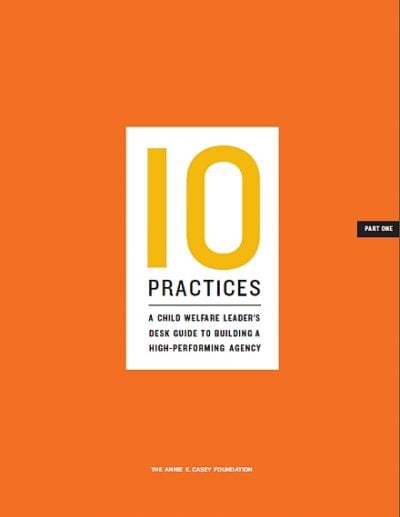Using Disparities
Child welfare agencies can do more than measure racial disparities — they can also use information about disparities to shape decision making for individual children as well as shape agency policies and practices.

The child welfare leader’s desk guide is designed to help busy child welfare leaders gauge their agency’s effectiveness and chart a course toward measurable improvement. New leaders will benefit from the desk guide’s structured, yet flexible road map for assessing their agency’s strengths and opportunities and creating an agenda for change.
Part One of the desk guide presents targeted information on 10 practices, including 10 outcomes and 15 measures that are arguably the heart of most child welfare improvements. Leaders can use these and other measures throughout the desk guide to compare their agency results to other systems across the country.
Part Two of the desk guide presents research, references and appendices related to the 10 practices of high-performing agencies. Agency staff can use these materials to assess their agency’s outcomes and install and sustain improvements.
Research is reshaping our knowledge of what works for children and families and it is imperative that public systems act on that knowledge. When child welfare improvements are thoughtfully chosen, sequenced and installed, they can help an agency do a better job of meeting the needs of children and families while ensuring quality and controlling costs. Managing with data, both quantitative and qualitative, is critical to effective service delivery and quality improvement.
We hope you'll find value in this report. We’d love to get a little information from you, which we'll use to notify you about relevant new resources.